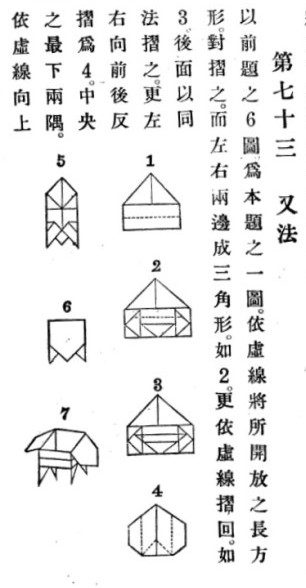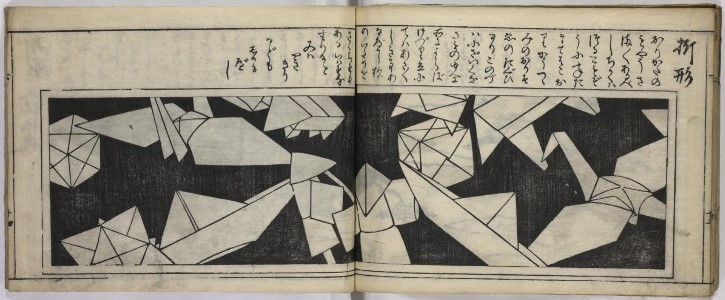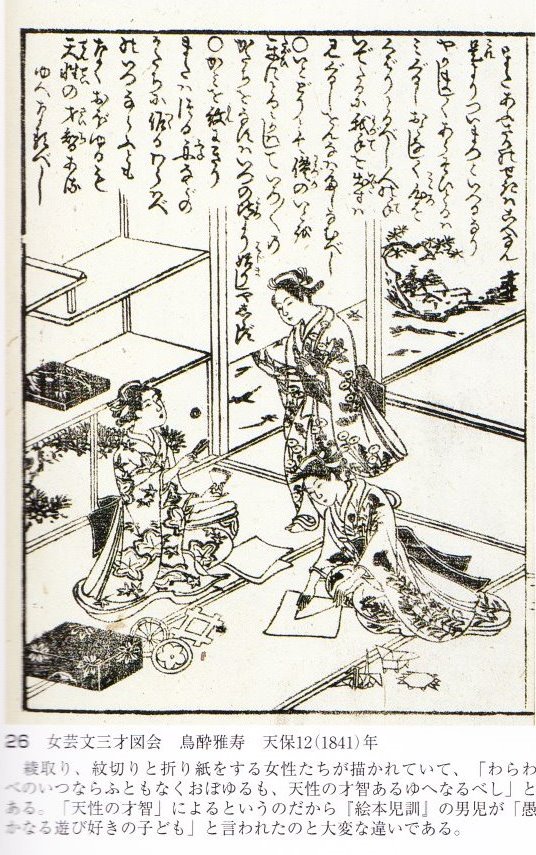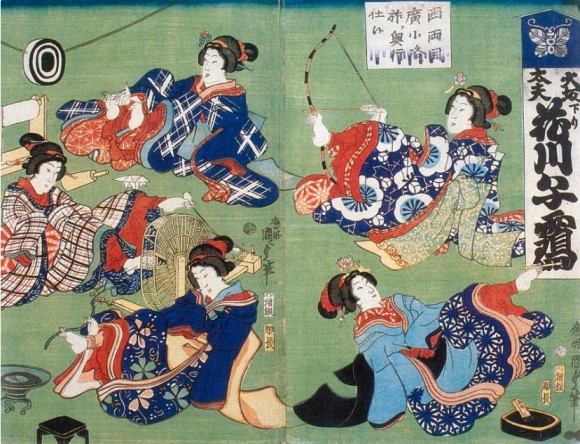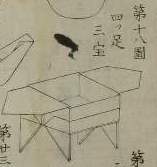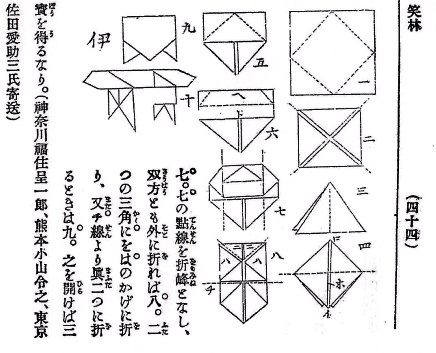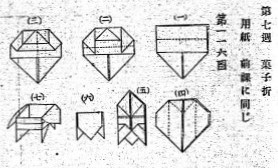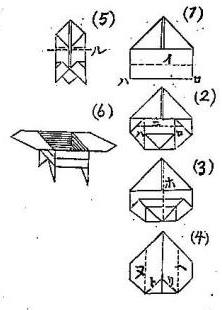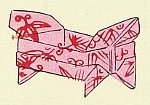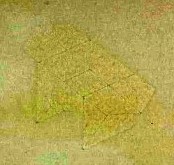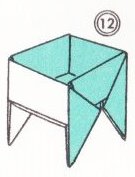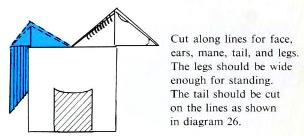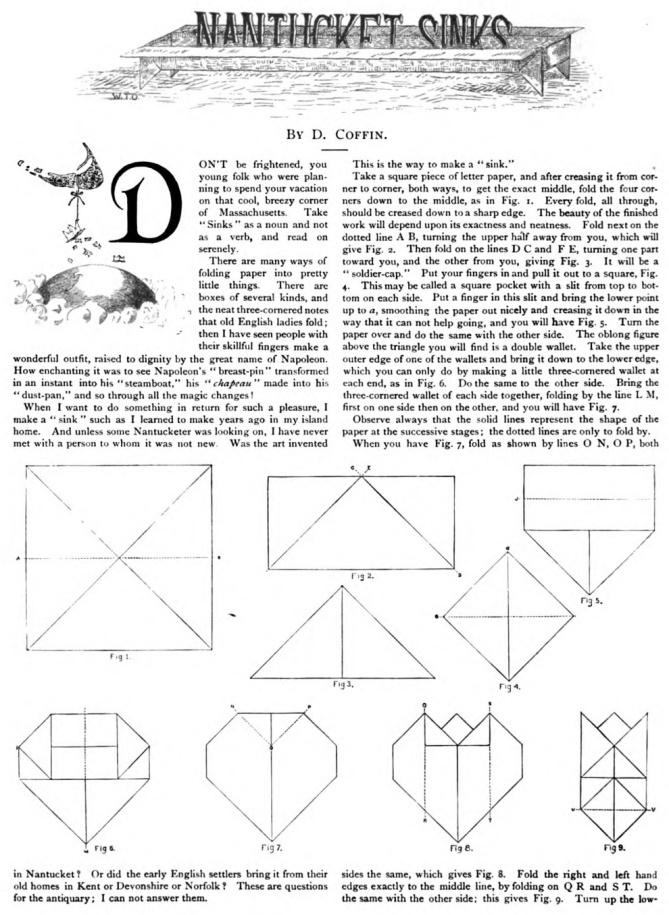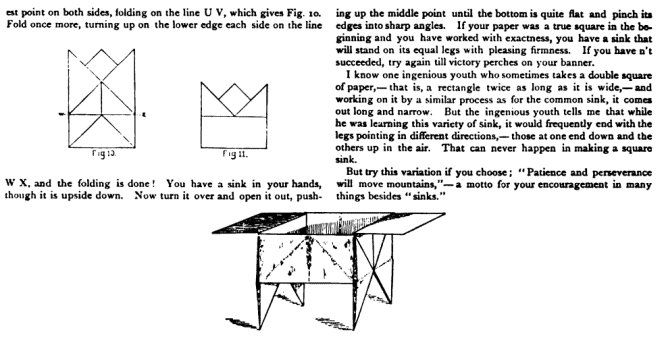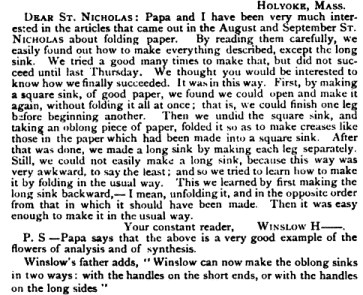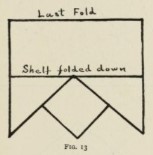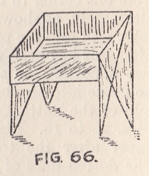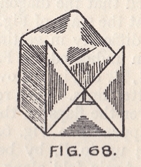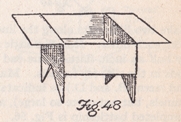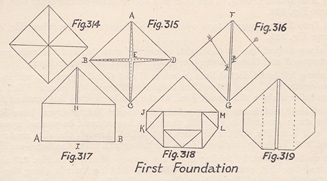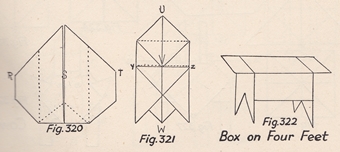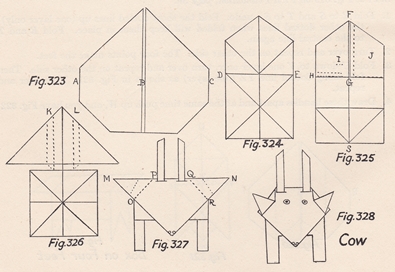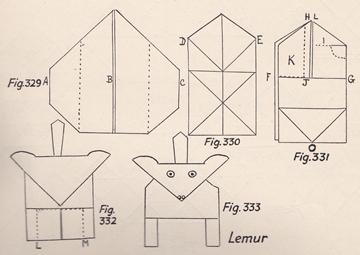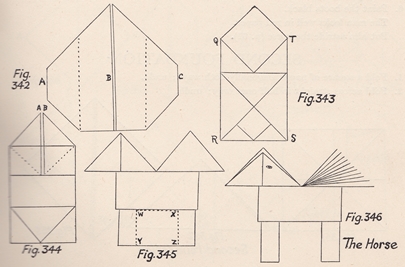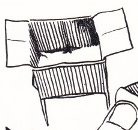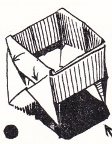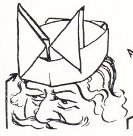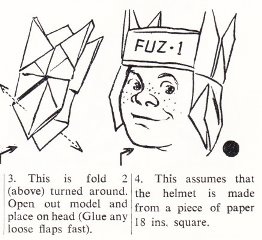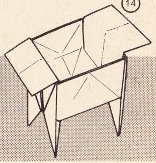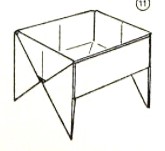| The Public Paperfolding History Project
Last updated 24/3/2025 x |
|||||||
| The Sanbo on Legs and its derivative designs | |||||||
| This
page is being used to collect information about the
history of the paperfolding design which I call the Sanbo
on Legs (to distinguish it from the Sanbo). Please
contact me if you know any of this information is
incorrect or if you have any other information that
should be added. Thank you. Sanbo is sometimes found written in the paperfolding literature as Sambo or Sanbow but I believe that Sanbo should be preferred. It is worth noting that the early Japanese illiustrations of the paperfold vary in appearance from the design that we are now familiar with. It seems unlikely that this is entirely due to illustrative license and it is therefore possible that these ought to be considered as separate designs. The version of the design which appears in the entries for Japan for 1878, 1884 and 1912 is also different from the standard version of the design known in the West. ********** In China (and in publications by Chinese authors) 1914 Diagrams for this design, titled 'Another Way' (ie another way of folding a Sanbo), appear in 'Zhe zhi tu shuo' (Illustrated Paperfolding), compiled by Gui Shaolie, which was published by the Commercial Press in Shanghai in Ming guo 3 (1914).
********** 1934 The design also appears as 'Box with Feet' in 'Zhezhi Xinfa' (New Ways to Fold Paper), which was published by The Commercial Press in China in 1934.
********** In Japan (and in publications by Japanese authors) 1734 The earliest evidence I am aware of for the Sanbo on Legs design is from 1734 where a version of the design appears in a Japanese book called 'Ranma Zushiki'.
The drawings of the Sanbo on Legs are not particularly clear but the identification of the design has been confirmed by Koshiro Hatori in his on-line article 'History of Origami' (https://origami.ousaan.com/library/historye.html) thus: '"Ramma Zushiki" (1734) shows pictures of Boat, Sanbo, and a modular origami called Tamatebako, besides Orizuru and Komoso.' ********** 1841 This Japanese print from 1841 shows three women, or perhaps children at play. The figure at bottom right is folding paper. A completed Paper Crane and what appear to be a version of the Sanbo on Legs and a Crab lie on the floor. Source: Catalogue of an exhibition on paperfolding history held in Tatsuno City History and Culture Museum in 1999. According to this catalogue the wording mentions that 'the central angle can be divided into 3 or 5 equal parts'.
********** 1845 There is a note in the Kan No Mado, written in 1845, which lists the Sanbo among those designs which are already well known and which are therefore not included in the ms (in order to spare the writer's brush). It is not clear whether this note refers to the Sanbo or the Sanbo on Legs. ********** 1865 This undated print by Kunisada Utagawa shows Hanakawa Kotsuru, who was born without arms, and became famous for her ability to do extraordinary things, including paperfolding, with her feet. The picture shows her holding a Paper Crane with a version of the Sanbo on Legs on the floor beside her. The print can be no later than 1865 when Kunisada Utagawa died.
********** 1878 A drawing of the Sanbo on Legs appears in 'Yochien Ombutsu No Zu', a publication of kindergarten material issued by the Tokyo Women's Normal School in 1878.
********** The Sanbo on Legs also appears: 1885 In 'Kindergarten Shoho' (Preliminary Kindergarten) by Iijima Hanjuro, which was copyrighted on October 4th Meiji 17 (1884) and published by Fukuda Senzo in August of Meiji 18 (1885).
********** 1893 In Volume 5 issue 23 of the Japanese children's magazine 'Shokokumin' which was published in 1893.
********** 1905 In 'Shukoka Kyoju Saian' by Gentaro Tanahashi and Hideyoshi Okayama, which was published by Hobunkan in Tokyo in 1905.
********** 1908 Diagrams also appear in 'Origami zusetsu' (Illustrated Origami) by Sano Shozo, which was published in Tokyo in 1908.
********** 1912 In a monozukushi-e print, by an unknown artist, but said to be from the Meiji era. I have temporarily assigned it the date of 1912, the last year of that era, pending the discovery of more accurate information.
********** 1935 In 'Origami Moyo, Book Two' by Kawarazaki Kodo, which was published in Japan in 1935.
********** The design also appears: 1944 In 'Origami Shuko' by Isao Honda, which was published in 1944.
********** 1960 As 'An O-Sanbo' in 'All About Origami' by Isao Honda, which was published by Toto Bunka Company, Limited in Tokyo in 1960.
********** As 'A Container with Four Legs' in 'Pocket Guide to Origami: Bow-Wow Book', by Isao Honda, which was published by the Asahi Origami Club, Tokyo in 1960.
********** 1965 In two forms, as the 'Sambo on Legs' (left) and as the 'Cake Dish' (right), in 'The World of Origami' by Isao Honda, which was published in the USA by Japan Publications Trading Company in 1965.
********** 1968 A 'Horse' developed from the Sanbo on Legs by means of cuts appears in 'Origami in the Classroom: Book 2: Activities for winter through summer' by Chiyo Araki was published by Charles E Tuttle Co Inc in 1968
********** 1970 As 'Candy Stand' in 'Origami Nippon' by Isao Honda, which is a paperback book published by Honda Origami Studio in Tokyo in 1970.
********** In Western Europe and the Americas 1887 As far as I know the first appearance of the Sanbo on Legs design in the West was in the August 1887 issue of the American children's magazine St Nicholas under the somewhat surprising name of 'Nantucket Sinks'.
The issue of St Nicholas for January 1888 contained a reader's letter, in the Letterbox column, describing how the long version of the design could be achieved and varied.
********** 1910 The name 'Nantucket Sink' is also used for this design in 'Studies in Invalid Occupation' by Susan E Tracy, which was published by Whitcomb and Barrows in Boston in 1910.
********** The design also appears: 1923 As the 'Trough' in 'More Paper Magic' by Will Blyth, which was published by C Arthur Pearson in London in 1923.
This book also contains a derivative design called the 'Norseman's Helmet'.
********** 1928 As the 'Work Table'.in Murray and Rigney's 'Fun with Paper Folding', which was published by the Fleming H Revell Company in New York in 1928.
********** 1932 As 'A Paper Tray On Legs' in 'Winter Nights Entertainment' by R M Abrahams, which was first published by Constable and Constable in London in 1932.
********** 1937 The design also appears in 'Paper Toy Making' by Margaret Campbell, which was first published by Sir Isaac Pitman and Sons Ltd in London, probably in 1937, although both the Foreword and Preface are dated 1936, which argues that the book was complete at that date, under the title of 'Box On Four Feet'. This book also includes instructions showing how to adapt the Sanbo, using cuts, to produce a Cow, Lemur and Horse.
The Cow
The Lemur
The Horse
********** 1955 The 1955 Rupert Annual contains folding instructions for the design under the title of 'Paper Work Basket'. Note that in this version the flaps have been tucked in.
********** 1956 'Paper Magic' by Robert Harbin, which was published by Oldbourne in London in 1956, contains the Sanbo on Legs, here called the 'The Kitchen Sink or Four-Legged Container' and three simple variants. The Sanbo on Lregs
*** The Trough
*** The Norseman's Helmet
*** The Spaceman's Helmet (which Robert Harbin says is his own design)
********** 1968 This design also appears, as 'Sanbow 2 :Japanese Offering Tray', in 'Teach Yourself Origami: The Art of Paperfolding' by Robert Harbin, which was published by The English Universities Press in 1968.
********** The design also appears, as 'Four-legged Container', in 'Your Book of Paperfolding' by Vanessa and Eric de Maré, which was published by Faber and Faber in London in 1968.
********** |
|||||||
